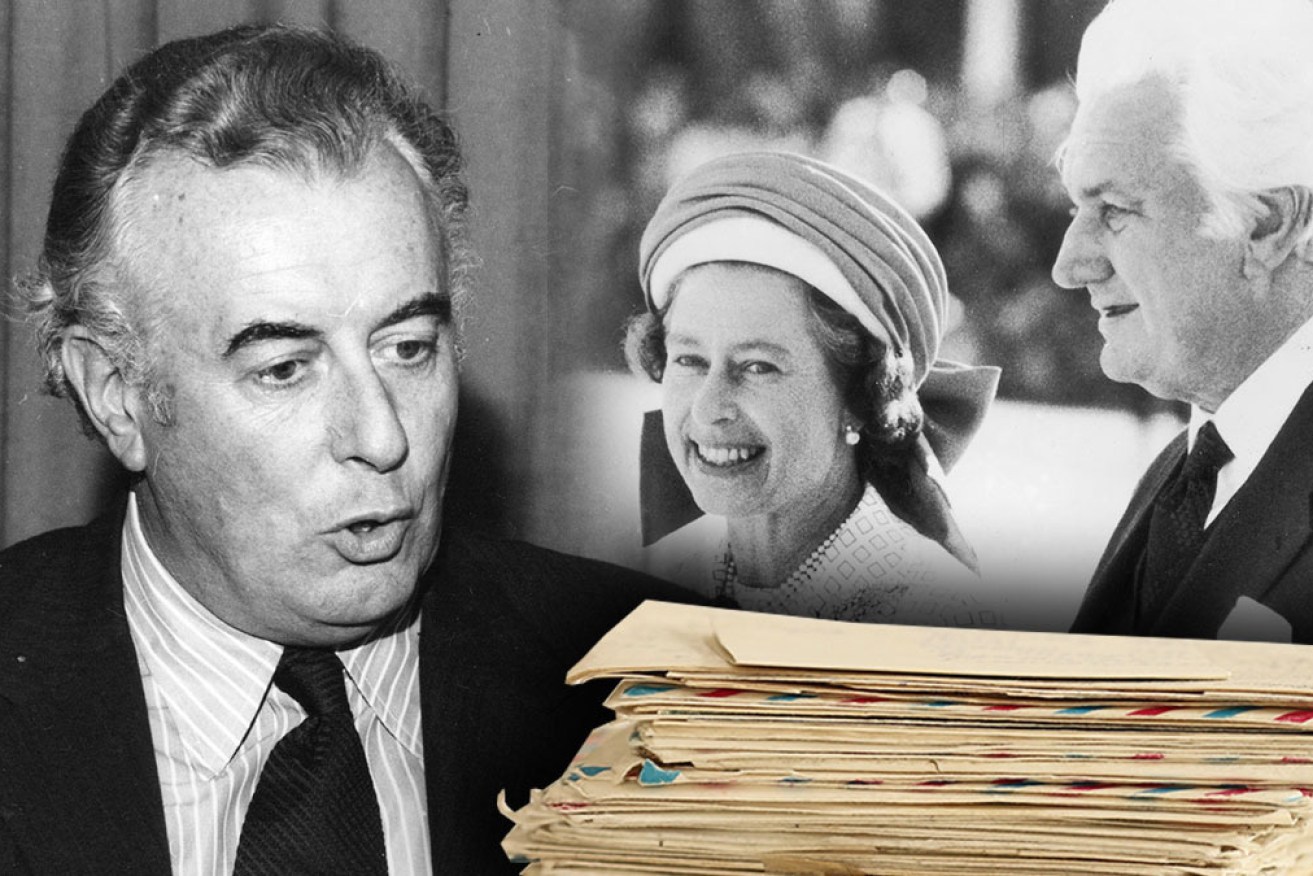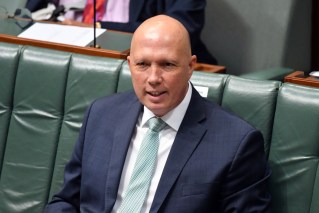Palace letters reveal Sir John Kerr dismissed Whitlam without telling Queen


The 'palace letters' are being released today.
Queen Elizabeth was told of Sir John Kerr’s consideration of the dismissal of prime minister Gough Whitlam months before the historic decision of November 1975, the palace letters reveal.
But in another letter, Sir John claims that his final decision to dismiss Mr Whitlam was made without the Queen’s knowledge.
The so-called ‘palace letters’, between then-Governor General and the Queen in the period covering the Whitlam dismissal, were finally revealed on Tuesday by the National Archives of Australia. It comes after Monash University’s Professor Jenny Hocking successfully launched High Court action to secure their release.

Letters from the period of the Whitlam dismissal have been publicly released. Photo: Getty
Archives director-general David Fricker revealed to reporters at a briefing in Canberra fascinating details contained in the 212 letters, totalling more than 1000 pages, many with attachments such as newspaper clippings, reports, and copies of letters related to meetings and events attended by Sir John Kerr during his tenure as Governor-General.
“They really do provide a great insight as to how the Governor-General saw his role, how he dealt, from his office, with this crisis, this constitutional crisis. And again,
“I hope that it will illuminate us all in Australia about what is a constitutional monarchy, how does the Constitution of Australia work, how does our democracy work, how does the parliament work,” Mr Fricker said.
They are now on the Archives’ website.
In a letter to the Queen on November 11, Sir John gave notification that he had dismissed Mr Whitlam as PM, saying he took the action without telling Buckingham Palace ahead of time.
“I should say I decided to take the step I took without informing the
Palace in advance because, under the Constitution, the responsibility is mine, and I was of the opinion it was better for Her Majesty not to know in advance, though it is of course my duty to tell her immediately,” the letter reads.

Sir John Kerr with Queen Elizabeth. Photo: Central Press/Getty Images
The same letter says that Sir John had spoken with the then-Chief Justice of the High Court, Sir Garfield Barwick, before dismissing Mr Whitlam.
“Before taking the final step, although I had already made up my mind, I consulted Sir Garfield Barwick as to my authority and duties in the present situation,” Sir John wrote.
A reply several days later, from the Queen’s private secretary Sir Martin Charteris, thanked Sir John for his course of action.
“I believe that in NOT informing the Queen what you intended to do before doing it, you acted not only with perfect constitutional propriery but also with admirable consideration for Her Majesty’s position,” Sir Martin told the Govenor-General.
Other letters, however, show that Sir John had discussed the possibility of dismissing the Prime Minister with the palace, including the extent of his powers to do so, and how such a situation would be handled.

Malcolm Fraser was later sworn in as caretaker PM. Photo: Getty
In a letter on November 4, a week before the dismissal, Sir Martin writes that he believes Sir John had the power to dissolve parliament, but that it would be a “heavy responsibility”.
“Mr Fraser wants to believe it is already a constitutional crisis because he wants you to bring about an election he thinks he can win,” Sir Martin writes of Malcolm Fraser, the then-Liberal leader who would later be installed as PM.
Sir John’s actions were also made in light of his belief that Mr Whitlam may look to unseat him as Governor-General. On October 2, after Sir John had met Prince Charles in Papua New Guinea and discussed his suspicion Mr Whitlam wanted to ask the Queen to remove him as governor-general, Sir Martin told him that if it came to that, the Queen “would have no option but to follow the advice of her prime minister”.
An October 8 letter from Sir Martin thanks Sir John for keeping the Queen informed of the brewing constitutional issues around Mr Whitlam’s government, including the blocking of supply bills in the Senate.
Sir Martin uses a cricketing metaphor to describe the situation, saying Sir John would potentially face a scenario that would be “a real bouncer and not at all easy to play”.
Due to higher than usual traffic, RecordSearch is temporarily unavailable. Thank you for your patience as we work to restore the service.
— National Archives of Australia (@naagovau) July 14, 2020
Access to the letters on the website was delayed, with the National Archives website running slow or being inaccessble to many people. The National Archives blamed “higher than usual traffic” for making its website difficult to access.
The Archives later made the letters available in a downloadable PDF format.
The Palace Letters are now available to download as PDFs on our website: https://t.co/MCLOvKMEBy
— National Archives of Australia (@naagovau) July 14, 2020
Mr Fricker had earlier urged people to read the letters and attachments to get the full context of the historical period, noting that even which press clippings Sir John chose to include gave insight into his thinking.








